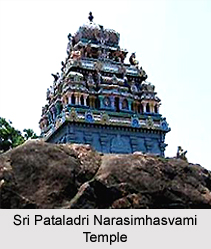 Singaperumalkoil is situated in Kanchipuram district in the Indian state of Tamil Nadu. It is a census town located by the GST road linking Chengalpattu and Chennai. The town is famous for among pilgrims for the temple dedicated Lord Narasimha.
Singaperumalkoil is situated in Kanchipuram district in the Indian state of Tamil Nadu. It is a census town located by the GST road linking Chengalpattu and Chennai. The town is famous for among pilgrims for the temple dedicated Lord Narasimha.
Demography of Singaperumalkoil
According to the census report of 2001 Singaperumalkoil had a population of 8057. Males constitute 51% and females constitute 49% of the population. Singaperumalkoil has an average literacy rate of 74%. It is higher than the national average of 59.5%: male literacy is 80%, and female literacy is 66%. 11% of the population is under 6 years of age in Singaperumalkoil.
Pilgrimage Places in Singaperumalkoil
Sri Pataladri Narasimhasvami Temple located in Singaperumalkoil is a famous pilgrimage centre visited by many devotees. The temple is dedicated to Lord Narasimha and is perched on top of the small hill known as `Padalathri.` Lord Ugra Narasimha (the fourth Avatar) is seen residing inside a cave in a yoga posture. According to mythology the lord appeared in this posture to Jabali Rishi according to his wishes. The temple as well as the idol of the Lord has been carved out of a single rock of the mountain. Sri Pataladri Narasimhasvami Temple is said to have been constructed by the rulers of the Pallava Dynasty. Apart from this there is another separate shrine dedicated to Goddess Lakshmi. The goddess here is known as Ahobila Valli. The idol of Lord Srinivasa has also been installed in the temple. Devotees can circumambulate around the temple climbing small steps. A wish tree is located outside the temple where devotees tie knots in order to fulfil their wishes.
This article is a stub. You can enrich by adding more information to it. Send your Write Up to content@indianetzone.com



















